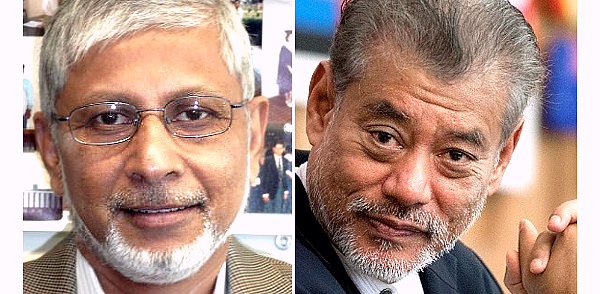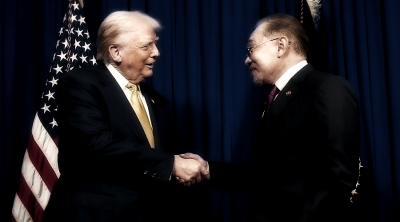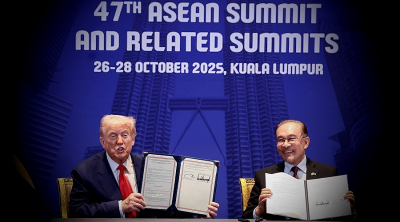
Instead of a health system striving to provide universal healthcare, a fragmented, profit-driven market ‘non-system’ has emerged. The 1980s’ neo-liberal counter-revolution against the historic 1978 Alma-Ata Declaration is responsible.
Alma-Ata a big step forward
Neoliberal health reforms over the last four decades have reversed progress at the World Health Organization (WHO) Assembly in the capital of the then Socialist Republic of Kazakhstan, now known as Almaty.
Then, 134 WHO Member States reached a historic consensus reaffirming health as a human right. It recognized that heath is determined by environmental, socioeconomic and political conditions, not only medical factors narrowly understood.
The Declaration stated, “Governments have a responsibility for the health of their people which can be fulfilled only by the provision of adequate health and social measures”.
Also, “The people have the right and duty to participate individually and collectively in the planning and implementation of their health care”.
Countries committed to the fundamental right of every human being to enjoy the highest attainable standard of healthcare without discrimination. They agreed that primary healthcare (PHC) is key to addressing crucial determinants of health.
Alma-Ata eschewed overly ‘hospital-centric’ and ‘medicalized’ systems, instead favoring a more ‘social approach’ to medicine. In the Cold War divided world, the Declaration was a triumph for humanity, promising progress for global health.
It recognized the crucial contributions of multilateral cooperation, peace, social health determinants, health equity norms, community participation in planning, implementation and regulation, and involving other ‘sectors’ to promote health.
Primary healthcare
Some developing countries – e.g., China, Costa Rica, Cuba and Sri Lanka – had already achieved impressive health outcomes at relatively low cost, raising life expectancy by 15 to 20 years in under two decades.
Instead of just curative medicine and clinical care, prevention and public health were given more emphasis. Basic health services, improved diets, safe water, better sanitation, health education and disease prevention became central to such initiatives.
Mainly rural community health workers (CHWs) were trained to help communities address common health problems. Differences in national government approaches, contexts and needs have also shaped PHC outcomes, reach and efficacy, e.g., in delivering healthcare to the poor.
But despite reversals elsewhere, some efforts have continued, even expanded. Even in the 21st century, large-scale PHC efforts have made remarkable health gains, e.g., Brazil’s Programa Saude da Familia and Thailand’s Universal Coverage Scheme.
Lalonde Report turning point
Thus, Alma-Ata inverted health policy priorities, as 90% of health problems were recognized as due to lifestyles, environments and human biology, with only 10% due to the “healthcare system“, as noted by Canada’s 1974 Lalonde Report.
The Lalonde Report reaffirmed WHO’s basic approach. Its 1946 constitution had affirmed, “Health is a state of complete physical, mental, and social well-being and not merely the absence of disease or infirmity”.
The Report’s multidimensional approach to human health marked a turning point, reshaping policy approaches. Similar health assessments, with more holistic understandings, were also influential.
Reports from the UK, USA, Sweden and elsewhere also challenged the dominant medicalized approach to healthcare promoted by big pharmaceutical and other health-related businesses.
Neo-liberal ascendance
Developments since the 1980s have set back and reversed the Alma-Ata commitments. Latin American and other debt crises paved the way for the neo-liberal ‘Washington Consensus’ counter-revolution.
‘Rescue packages’ from the International Monetary Fund and World Bank, especially structural adjustment programs (SAPs), demanded public spending cuts. These reduced social spending, cutting funding for health.
Thus, many PHC, including CHW programs did not last. Citing cost recovery, SAPs pressed to impose user fees and privatize health services. The outcomes betrayed Alma-Ata’s promise of greater health equity, and ‘Health for All’ by 2000, undermining prospects for universal health coverage.
The World Bank’s 1993 World Development Report, ‘Investing in Health’, also undermined Alma-Ata. Justifying state healthcare provisioning cuts, it promoted for-profit health financing and other private solutions.
Healthcare financing key
In neo-liberal dialect, strengthening health systems meant “enhancing public-private partnerships” among other such interventions. The Bank provided substantial financial support to fund its recommendations.
Despite Alma-Ata, the WHO’s 2000 World Health Report (WHR 2000) criticized developing countries for “focusing on the public sector and often disregarding the – frequently much larger – private provision of care”. It argued, “Health policy and strategies need to cover the private provision of services and private financing”.
Addressing health progress became more ‘siloed’ with the UN’s Millennium Development Goals (MDGs) indicators’ focus on curing and preventing particular diseases. Neither WHR 2000 nor the MDGs reiterated Alma-Ata’s emphasis on social justice, equity and community participation.
Instead, that era saw more healthcare privatization, public-private partnerships and contracting out of services. After this neo-liberal eclipse, WHO’s attempted U-turn, starting over a decade ago, has emphasized universal health care (UHC) and socioeconomic determinants, but the Alma-Ata betrayals prevail.
Thus, the Bank’s International Finance Corporation has been promoting private investments in healthcare services and infrastructure. Deploying billions, it buys public policy influence in Africa, India and beyond.
Philanthropy rules
Unsurprisingly, cash-strapped governments have welcomed financial support from supposed ‘do-gooder’ philanthropists. Many states have to cope with fragile, even crumbling health systems, often overwhelmed by old killers and new epidemics.
Such MDGs-inspired support has typically been via ‘vertical funds’ targeting specific diseases – contrary to Alma-Ata. With more money than WHO’s paltry budget, corporate philanthropy has been remaking policies the world over.
Thus, the policy and ideological prejudices of the Gates Foundation, Global Alliance for Vaccines and Immunization and Global Fund to Fight AIDS, Tuberculosis and Malaria have obscured Alma-Ata, also reshaping national health priorities.
COVID-19 has unveiled some more effects of various profit-driven healthcare inequities, chronic under-investment in PHC, and over-investment in profit-driven healthcare. They have not only hastened the retreat from ‘health for all’ and UHC, but also made the world more vulnerable to epidemics.
Worse, the interests and priorities of corporate philanthropy have not only raised the costs of, and thus delayed containing the pandemic, but also reversed much of the modest and uneven progress of recent decades, besides worsening inequalities.
This article was originally published on KSJomo.org.
Related IPS commentaries:
- Privatized health services worsen pandemic
- Why some national health care systems do better than others
- Hospital PPPs undermine healthcare
- PPPs likely to undermine public health commitments
- Big Business capturing UN SDG agenda?
(Anis Chowdhury is Adjunct Professor, Western Sydney University and University of New South Wales, Australia. Jomo Kwame Sundaram was an economics professor and United Nations Assistant Secretary-General for Economic Development.)
ADVERTISEMENT
ADVERTISEMENT





































